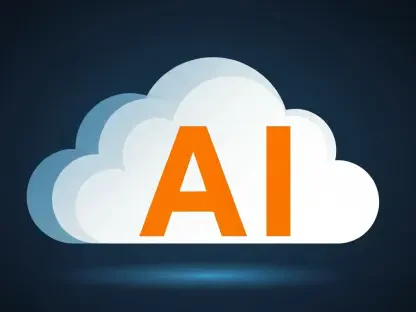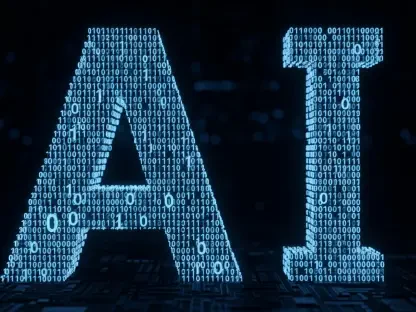Imagine a world where a single sentence can transform into a fully functional software application, where developers spend less time on tedious coding tasks and more on crafting innovative solutions that push boundaries. This is no longer a distant dream but a reality shaped by generative AI, a technology that is redefining custom software development. With reports indicating that over 80% of developers now incorporate AI tools into their workflows, the impact of this advancement is undeniable. This review dives deep into the capabilities of generative AI, exploring how it revolutionizes the creation of tailored software solutions, boosts productivity, and introduces both opportunities and challenges for the industry. The aim is to provide a comprehensive analysis of this transformative tool and its role in shaping the digital landscape.
Understanding the Core of Generative AI
Generative AI stands as a pioneering subset of artificial intelligence, distinct for its ability to produce content—be it code, designs, or data—based on patterns derived from vast datasets. Unlike traditional AI, which focuses on analysis and prediction, this technology autonomously generates outputs, making it an invaluable asset in software development. It leverages sophisticated machine learning models, such as large language models and generative adversarial networks, to interpret inputs like natural language prompts and deliver functional results. This capability positions generative AI as a game-changer, streamlining complex processes across the development lifecycle.
The relevance of this technology extends beyond mere automation, embedding itself into the broader technological ecosystem. It empowers developers to tackle intricate challenges, from crafting bespoke applications to refining user interfaces, with unprecedented speed. As computing power and data access continue to advance, the adoption of generative AI has accelerated, becoming a cornerstone for innovation in creating adaptive and intelligent software solutions. This review examines how these foundational elements drive its significance in modern development practices.
Key Features and Performance Analysis
Code Generation and Automation Efficiency
One of the standout features of generative AI is its prowess in code generation, where it transforms natural language descriptions into executable code snippets. This functionality drastically reduces manual coding efforts, allowing developers to bypass repetitive tasks such as writing boilerplate code or debugging syntax errors. By interpreting high-level instructions, the technology delivers outputs that align with specific project requirements, often cutting development time by significant margins.
Beyond basic coding, generative AI excels in automating refactoring processes, suggesting optimizations for existing codebases to enhance performance and readability. Performance metrics reveal that developers using these tools can complete tasks up to 57% faster, a statistic that underscores the technology’s impact on productivity. However, the accuracy of generated code remains a concern, as occasional errors or “hallucinations”—fabricated outputs—require human validation to ensure reliability.
Prototyping and Design Innovation
Another critical feature lies in prototyping and design assistance, where generative AI converts conceptual ideas into tangible outputs like interactive interfaces. By processing wireframes or textual descriptions, it produces prototypes that developers can refine, significantly speeding up the initial stages of application design. This capability not only accelerates front-end development but also enhances user experience through AI-driven creative suggestions tailored to end-user needs.
The performance in this domain is notable for fostering innovation, as the technology often proposes alternative design solutions that human designers might overlook. For instance, it can generate multiple layout variations based on user behavior data, ensuring interfaces are both intuitive and engaging. While this feature shines in creative exploration, limitations exist in fully capturing nuanced design aesthetics, often necessitating manual adjustments to align with brand-specific guidelines.
Industry Adoption and Current Trends
The integration of generative AI into software development has surged, fueled by advancements in hardware like GPUs and expansive cloud infrastructure. A clear trend shows developers increasingly relying on AI tools for routine tasks, with adoption rates climbing steadily over recent years. This shift reflects a broader industry move toward intelligent, adaptive software that can dynamically respond to unique user or business demands, enhancing scalability.
Emerging patterns also highlight a growing emphasis on ethical considerations, as organizations recognize the need for guidelines to address risks like bias in AI outputs. The push for responsible adoption is shaping how companies deploy these tools, balancing innovation with accountability. Additionally, the democratization of access to advanced AI resources is enabling smaller teams to compete with larger enterprises, leveling the playing field in custom software creation.
A notable trend is the customization of AI models for specific industry needs, ensuring outputs are relevant and precise. From healthcare to finance, tailored applications are becoming commonplace, supported by robust datasets and specialized training. This trend points to a future where generative AI is not just a generic tool but a highly specialized ally in addressing niche development challenges.
Real-World Impact Across Sectors
Generative AI’s versatility shines through its applications across diverse industries, solving unique software challenges with tailored solutions. In healthcare, it powers the creation of patient management applications, generating code that complies with strict regulatory standards while personalizing features for specific medical facilities. This ensures both efficiency and adherence to critical protocols.
In the e-commerce sector, the technology drives recommendation engines by producing adaptive code that evolves with consumer trends, enhancing personalization in shopping experiences. Meanwhile, financial institutions leverage generative models for fraud detection systems, using synthetic data to train algorithms without risking sensitive information exposure. Manufacturing benefits from AI-generated IoT software, optimizing supply chain operations through real-time sensor integration code, demonstrating the technology’s far-reaching adaptability in meeting specialized demands.
Challenges in Implementation
Despite its transformative potential, generative AI faces several hurdles that temper its widespread adoption. Technical challenges, such as inconsistent output accuracy, often result in code or designs that require extensive validation, slowing down workflows. These inaccuracies, sometimes referred to as hallucinations, highlight the necessity for robust oversight mechanisms to maintain quality standards in deliverables.
Ethical concerns also loom large, particularly around bias embedded in training data, which can lead to inequitable software outcomes if not addressed. Data privacy risks further complicate implementation, as synthetic data generation must be carefully managed to prevent unintended exposure of confidential information. Integrating AI with legacy systems poses additional difficulties, often demanding significant resources to ensure compatibility and seamless operation.
Skill gaps among development teams present another barrier, as over-reliance on AI tools risks diminishing fundamental coding expertise, especially among newer professionals. Addressing these challenges requires a balanced approach, combining technological advancements with human judgment. Ongoing efforts to refine training methodologies and establish ethical frameworks are crucial steps toward mitigating these limitations.
Future Potential and Innovations
Looking ahead, generative AI in software development is poised for remarkable evolution with innovations that promise to expand its capabilities. Multimodal models, capable of processing text, images, and code concurrently, are set to enable the creation of comprehensive applications from diverse inputs, streamlining full-stack development. Such advancements will likely redefine how developers approach complex projects over the coming years.
Edge computing integration offers another exciting prospect, allowing generative tasks to execute on-device, minimizing latency for real-time software customizations in mobile and IoT contexts. Additionally, federated learning is emerging as a solution to enhance privacy by training models across decentralized datasets, reducing the risks associated with centralized data handling. These developments signal a shift toward more secure and responsive AI applications.
Sustainability is also gaining attention, with efforts to optimize code for energy efficiency addressing the environmental footprint of data-intensive operations. As regulatory frameworks mature in the near term, standardized guidelines will likely promote ethical usage and interoperability, ensuring generative AI’s growth aligns with societal values. These potential advancements underscore a trajectory toward smarter, more responsible software development practices.
Final Thoughts and Next Steps
Reflecting on this exploration, generative AI proves to be a transformative force in custom software development, delivering unparalleled efficiency and creativity while presenting manageable challenges. Its ability to automate complex tasks and inspire innovative solutions marks a significant leap forward for developers across industries. The technology’s real-world applications showcase its adaptability, even as implementation hurdles underscore the importance of oversight.
Moving forward, stakeholders should prioritize establishing robust ethical guidelines to address bias and privacy concerns, ensuring responsible deployment. Investing in training programs to bridge skill gaps will also be essential, empowering teams to leverage AI without losing core competencies. Additionally, fostering collaboration between developers and AI systems can unlock hybrid approaches that maximize strengths on both sides. By focusing on these actionable steps, the industry can navigate the complexities of generative AI, paving the way for a more dynamic and inclusive digital future.









